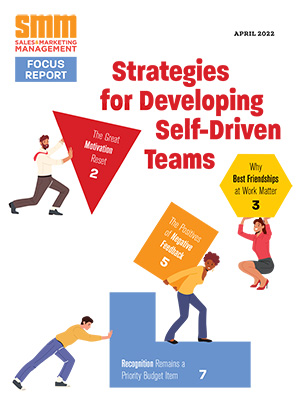I’ve spent the better part of my career growing businesses that had enormous sales and marketing operations. I’ve also seen myriad “sales enablement” strategies designed and implemented. Some were successful, many were not.
There was one common thread in all the sales enablement failures. They all asked the marketing department to produce more material than was feasible for their team or their budget. We’re seeing the same problem in content marketing initiatives today. Aberdeen has in fact reported that only 32% of marketers think they are effectively executing enough content.
But the problem isn’t as simple as making more content. CMI reported that 73% of marketers produced more content year-over-year from 2013-2014, indicating that production is scaling up dramatically.
That data makes it easy to understand why there’s so much tension between sales and marketing departments in a Web-first business world. The appetite for content, whether it’s videos, blogs, articles, reports or whitepapers, is increasing faster than most businesses can handle.
With that in mind, any sales enablement strategy is destined to fail unless there’s a plan in place to match content supply to demand.
But how do you do that without tripling the size of your marketing department?
To start, you need to change the way you look at the Web.
The Web Is Your Content Production Ninja
Sales and marketing departments have traditionally treated the Web as a channel. In the MBA sense, it was a “direct to consumer” channel. But in the marketing sense, any online sales or “digital” campaigns were part of the “Web” channel in their annual plans.
As a result, we’ve perpetuated a myth that the entire Web was designed for distribution.
Over time, we’ve evolved our thinking to reflect how the Web has become a “place” where many people spend a whole bunch of their time. Social media marketing emerged from that realization – that brands could engage with consumers bi-directionally, in ways that print ads, billboards and sponsorships could never enable.
Yet distribution is still the prevailing theme. Brands now use Twitter to blast out promotions, Facebook to run display ads, and Outbrain to put their content in front of customers. It’s distribution all day, every day.
What if businesses turned that concept on its head? What if you were to use the Web to intake and source content?
Insofar as billions of blog posts, tweets, videos and reports can be found, captured and shared online, it turns out that the Web is the best and largest sales enablement operation on the planet. There are millions of pieces of high-quality content, just sitting there, begging to be shared and talked about.
We’ve been so worried about distributing content on the Web that we overlooked how we could find an overabundance of it in the very place we were publishing our own.
The Web is the most prolific writer, editor and video producer on your sales enablement team.
And it doesn’t even require a salary.
Individual Communities and Networks Are the New Channels
Viewing the Web as a content producer has ramifications for content distribution, as well. Content sourcing can happen anywhere on the Web, but distributing that content and engaging with customers happens on networks and communities. There are multiple social networks and communities online, and each distribution channel needs to be treated differently.
Why should each social network and online community be classified as a channel unto itself? The entirety of the Web is too big to be a single channel. The typical CMO is struggling with that problem on a daily basis. In 2000, there were 361 million Internet users. As of Q2 earnings in 2015, Facebook alone had almost 1.5 billion active monthly users.
To suggest that all networks and communities can be one bucket or channel in a marketing program is beyond unreasonable; it’s comical. Even lumping Twitter, Facebook and LinkedIn together under the title of “social channel” is potentially dangerous.
To correct our thinking, companies should change their approach to the Web’s distribution potential. Each network or community should have a sales lead and strategy just like channels and/or sales regions. And along with that, each channel needs its own criteria for measurement and accountability.
If you treat each social network as a unique channel, you can hold your sales teams accountable to the same diligence and rigor you expect from other channels. For instance, a marketer or salesperson on your team would be required to set goals, agree with leadership on KPIs and establish measurement plans for each specific network. (I’ve written at length about KPI’s for social selling, so I won’t get into it here.)
At this point you’ve given sales people the typical framework and resources they need to engage in wholly new places that have a wealth of leads and new prospects.
If one channel repeatedly underperforms on sales quotas or lead generation goals, you know it’s time to shut down the non-performing channel, or at least reassess your strategy.
Yet all of that is still opaque to most CMOs today. It’s just the “Web.” A huge, blended set of numbers from dozens and dozens of different social networks, advertising networks, and owned sites.
Content, Meet Channel
“If you’re trying to persuade people to do something, or buy something, it seems to me you should use their language, the language they use every day, the language in which they think.” — David Ogilvy
What’s most fascinating about the state of sales and marketing today is not that we’re grappling with change during the Internet era. It’s that we’ve lost sight of some of the time-tested methodologies and concepts that have served us well all these years.
In many ways, the growth of the Web is begging sales and marketing teams to get back to the basics: to tailor stories to audiences in conjunction with sales teams, and to measure everything.
These are core competencies that most salespeople and marketers no doubt excel at. If given a modernized framework for their work, one that understands the nature and scale of today’s Web, I have no doubt the results will turn heads while growing revenue.
Henry Nothhaft Jr. is the founder and CEO of Trapit, a leading provider of content discovery and curation, social selling and advocacy services for marketers. You can follow Henry on Twitter at @HenryHank.


